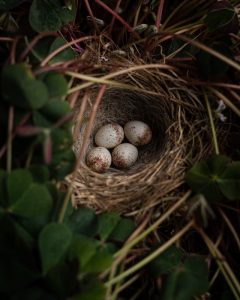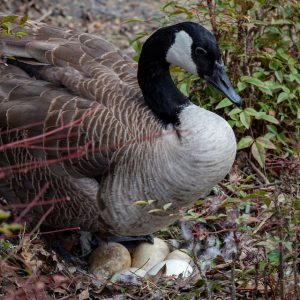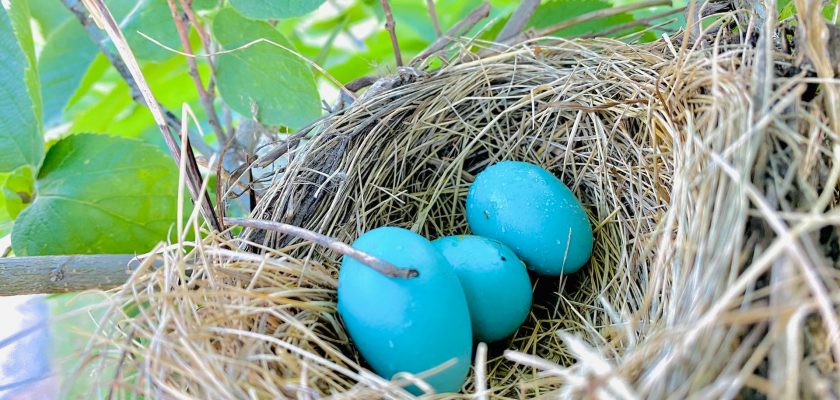There are many different factors to consider when trying to figure out how long does it take for bird eggs to hatch. The incubation period and optimum temperature for the eggs differ from species to species. For example, the length of time a blue jay’s egg takes to incubate is much longer than a hummingbird’s egg. In addition, the nesting location, the climate in which the egg is laid and whether or not the bird is returning to its nest are all important factors.
Optimal temperature for bird eggs
There are many factors that affect the optimal temperature for bird eggs to hatch. The most important is the temperature of the ambient air. This can be measured with an accurate thermometer.
Ideally, the optimal incubation temperature should be about 100 degrees Fahrenheit, although it can be warmer or cooler. Eggs will get chilly if the ambient temperature is much lower than their optimal incubation temperature. As soon as the female leaves the nest, the eggs will cool faster than they did before.
While most oviparous taxa select a specific thermal environment for their eggs, few birds incubate their eggs all the time. In some cases, there are conflicts between egg care and foraging.
A lot of birds sense the temperature of their eggs using brood patches. These patches are a temporary bare abdominal skin. They are used to regulate their attentiveness to the laying process and provide a measure of safety.

Photo by Lance Reis on Unsplash
Many species, including penguins, have developed the ability to transfer heat through these patches. Other birds, such as tree swallows, use their feathers to insulate their nests.
An ideal egg hatching temperature is 100.5 degrees Fahrenheit. Most birds will create the necessary temperature by sitting on the eggs. However, this may not be the best way to achieve the desired temperature.
The optimum incubation temperature can be controlled by a combination of temperature and humidity. During the first three days of incubation, humidity should be about 70 percent. On the final three days, it should be about 80 percent.
Depending on the type of bird, there is a wide range of optimal temperatures. Some species, like dusky flycatchers, have special rules governing the temperatures of their eggs.
Choosing the optimal temperature for your birds is an important task, because it affects the time it takes to hatch. If you are not able to maintain the right temperature, it is likely that your chicks will not survive.
It is a good idea to keep an accurate thermometer in your coop. Check the temperature regularly.
Incubation periods of different bird species
The duration of time required for a chick to hatch is a complex process and depends on many factors. This includes the length of the incubation period and the incubation temperature. A long incubation period may be advantageous in some species, while others will require a shorter incubation period.
Birds lay eggs all the time, but some species take longer than others to produce a chick. However, there is little evidence that differences in incubation periods between species are caused by evolutionary genetics. Nevertheless, parental behaviors that affect egg temperatures may explain interspecific variations in the incubation period of birds.
Several studies have examined the effects of temperature on egg development. Lower incubation temperatures result in slower hatching and lower quality hatchlings. Longer incubation periods are predicted for larger species. Some research has shown that warmer embryos survive better.
Despite the apparent benefits of long incubation periods, there is little evidence to suggest that it is beneficial to long-lived species. Instead, parental strategies that reduce intrabrood competition and reduce the quality of neonates increase lifetime reproductive success. In addition, less effort is invested in incubating the eggs, which decreases the risk of adult mortality.
Other factors that influence the incubation period of birds include the degree of hatchling development, the quality of the immune system, and the egg handling and storage conditions. Eggs need to maintain an incubation temperature of between 100 and 112 degrees Fahrenheit for the entire incubation period. It is also necessary to maintain humidity of at least 10%.
The incubation process varies between species, and the length of incubation depends on the environmental conditions of the nest. For example, a songbird at low elevations incubates its eggs for 84.3% of each 24-hour cycle.
In contrast, lowland tropical songbirds tend to engage in a different strategy. They make fewer nest visits and engage in longer on-bouts.
Another hypothesis suggests that the length of an incubation period is related to a trade-off between embryo growth rate and quality. This trade-off may enhance the fitness of the individual by allowing greater development of intrinsic features. But it might also result in a poorer quality offspring.
Nesting sites for various bird species
Birds will typically lay eggs on a daily basis. Eggs can remain viable for up to two weeks before hatching. This period can be affected by temperature and humidity, as well as other factors.
The time it takes for bird eggs to hatch depends on the species of bird. Small songbirds take 10 days to two weeks to fledge, while larger birds may require several months.

Photo by Joshua J. Cotten on Unsplash
Most egg-laying birds will stay in their nest until they are ready to fledge. They are dependent on their parents for food and warmth. Some birds will abandon their nests if they are threatened or if they think they are not viable.
Young bluebirds need their parents’ help to leave their nests. They may start to fly at three weeks of age, but they need to be coaxed out by their parents.
Nesting birds will build their nests in shrubs, trees, and bushes. They are usually made of pine needles, straw, or twigs.
The female bluebird will sit on her eggs until they hatch, which can be as long as 72 hours. She can take short breaks to poop. If she loses the male during the incubation process, she will abandon her eggs.
It is important for people to know that the incubation period of birds is influenced by the local climate. A warm environment speeds up development, while a cold environment slows it down.
Some bird species build their own nests, while others lay their eggs in abandoned nests of other animals. Many ducks will leave their nest immediately after hatching, but larger species may take up to a month before they can fledge.
The length of incubation is also influenced by the size of the eggs. Larger birds, such as eagles, will need six weeks before they can fledge. Other birds, such as raptors, will not leave their nest for eight to ten weeks.
In addition to the temperature of the nest, the humidity level can affect the incubation period. Dry nest boxes should be misted or flooded occasionally to keep the eggs from drying out. Ideally, the humidity should be between 60 percent and 80 percent.
Returning a bird egg to its home
The process of hatching bird eggs is difficult. You have to know how to handle them, how to feed them and keep them at certain temperatures. It takes about 16 hours of work a day to raise a young bird. If you are interested in hatching and raising a bird, you should contact a licensed wildlife rehabber.
Before you try to hatch an abandoned bird egg, you should check the nest and make sure that the egg is still viable. If the membrane inside the egg is damaged, it can hurt the embryo. Most bird eggs are viable for about two weeks before they go into incubation.
If you find a nest that appears abandoned, it is best to contact a wildlife professional. Sometimes a bird may abandon a nest because it is being harassed by a predator. Another reason can be because the nest is not secure. This can be caused by humans getting too close to the nest or by predators stealing the eggs.
In addition to these problems, a bird might also abandon a clutch if it does not hatch. A bird will only leave the nest for up to 30 minutes a day. So, if you find an empty nest, don’t take the risk of putting the eggs in the box with other birds. Birds have an instinct to stay with their nest and if a nest is not secure, the eggs will most likely be left alone.
If you find a nest that is not abandoned, you should contact the state fish and wildlife agency. You should also call a wildlife rehabilitator if you have found a nest that appears abandoned. Although it is not illegal to hatch abandoned eggs, it is better to respect the Migratory Bird Treaty Act.
Even though it is not illegal to hatch eggs, you should remember that they are very fragile and should be handled with care. You do not want to harm the young birds. They are incredibly vulnerable to predators and they are learning from their parents.
